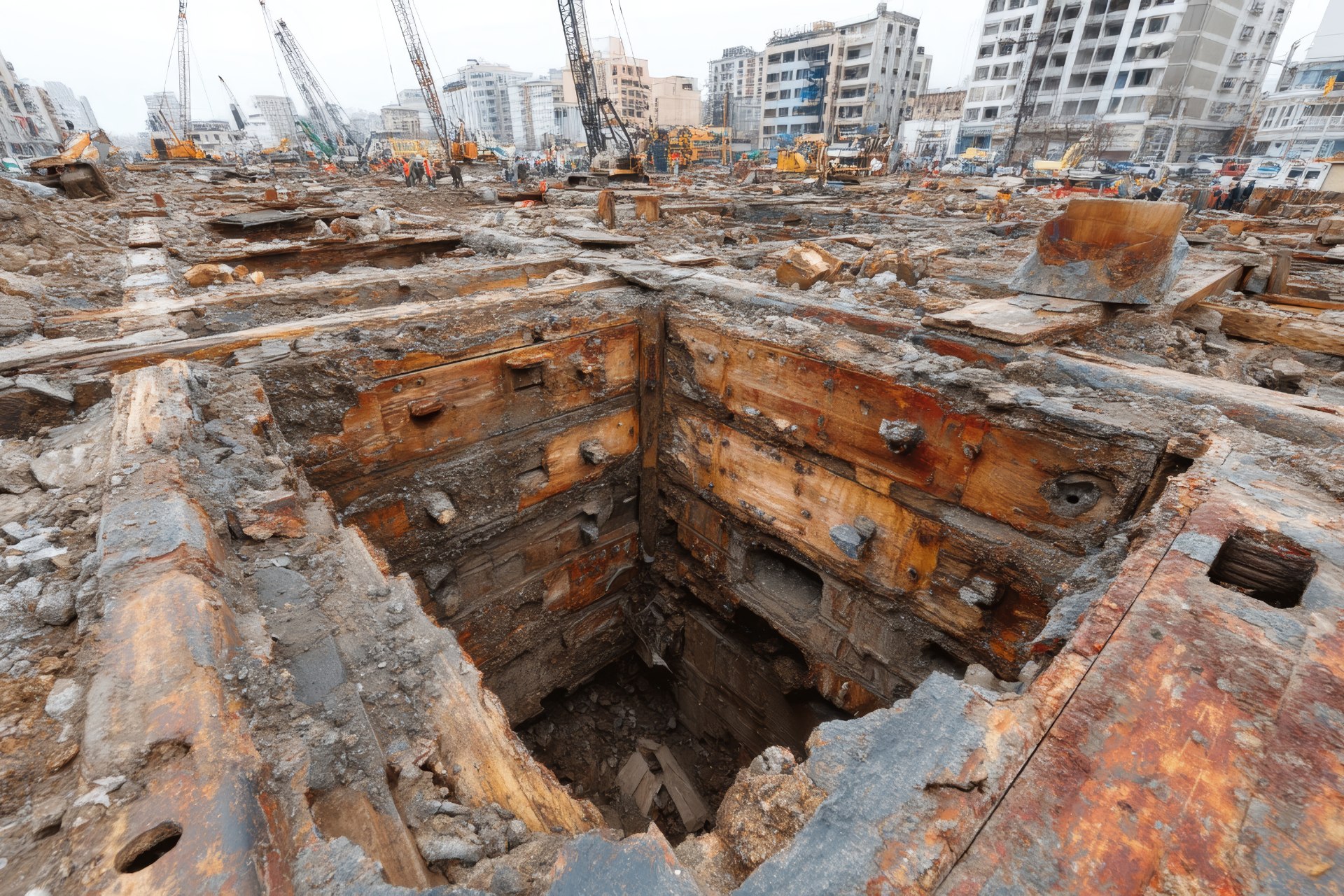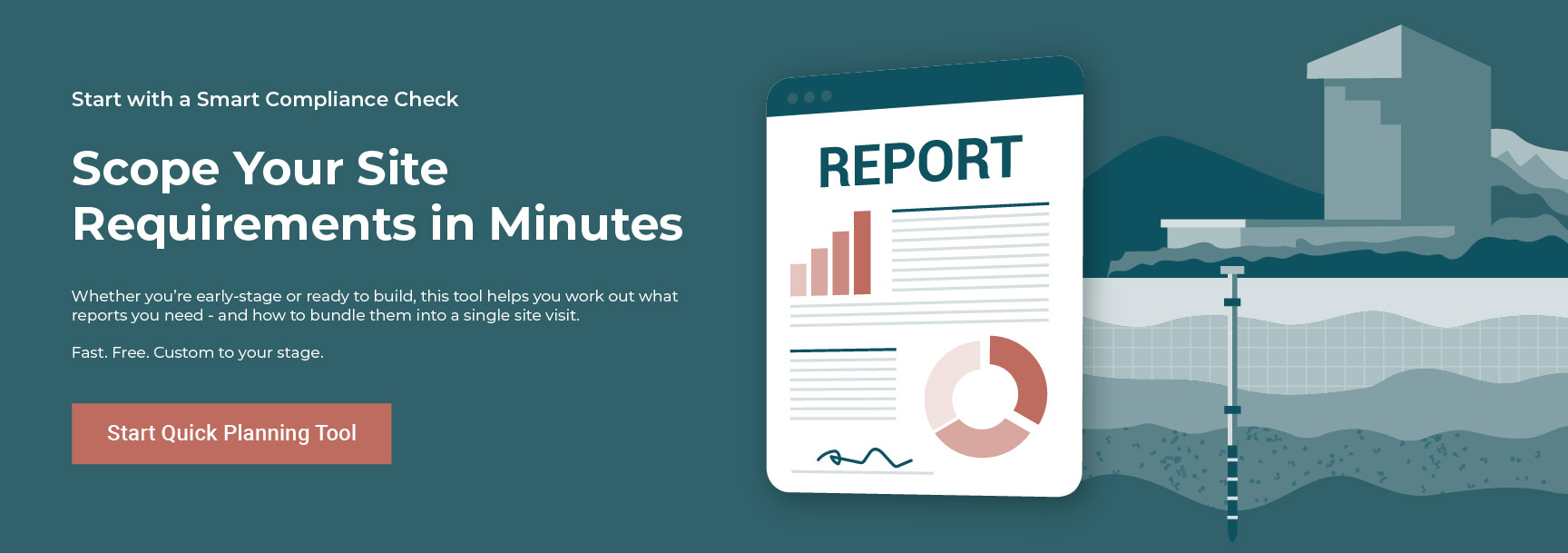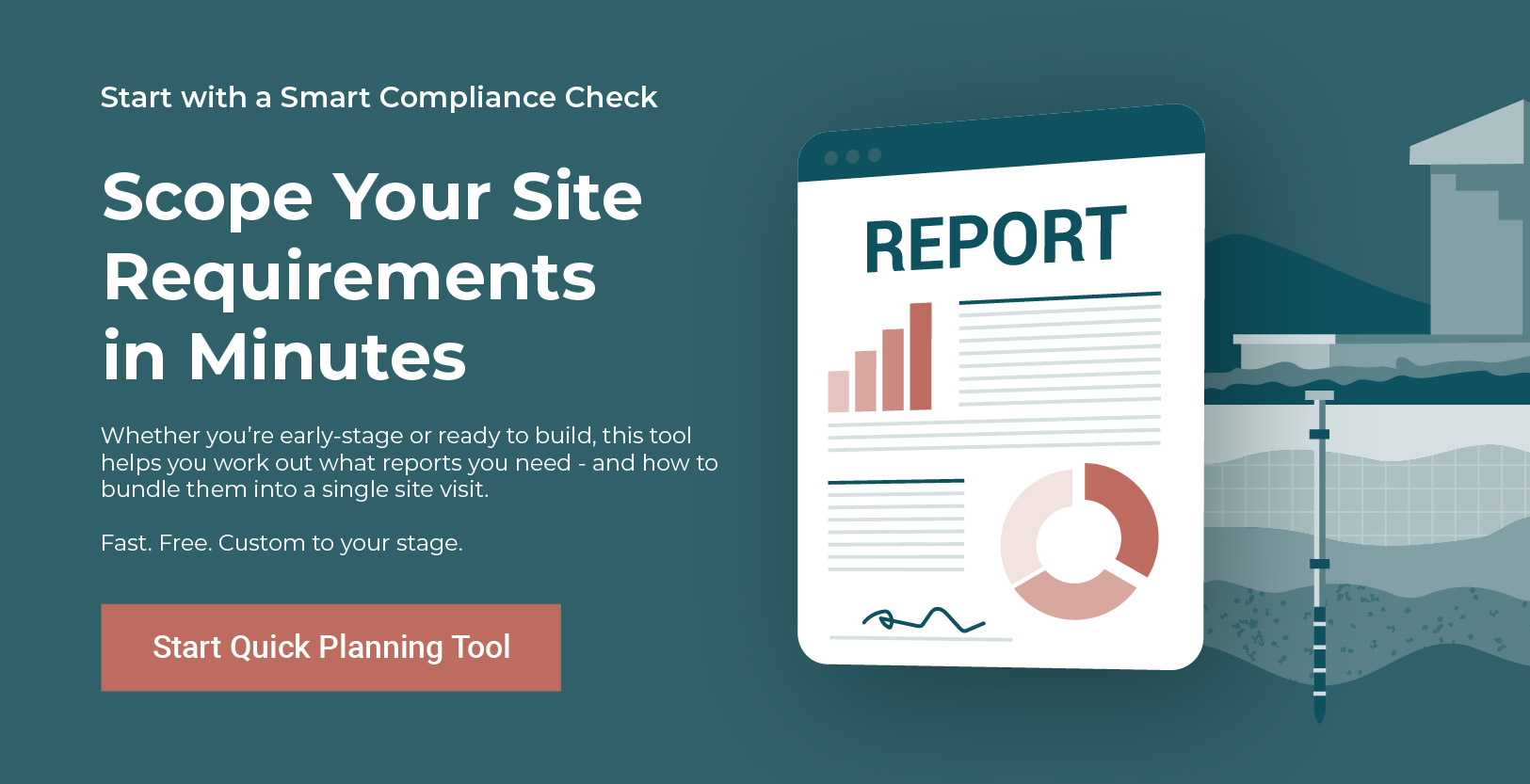Introduction
When embarking on a development, infrastructure or industrial build, your project’s success often hinges on what lies beneath the surface—literally. A robust geotechnical engineering assessment, aligned with a comprehensive site investigation, is not a discretionary extra: it is a foundational step in managing construction risk.
By integrating geotechnical insights early, you gain the clarity and control needed to design appropriately, satisfy regulators and mitigate downstream liabilities.
In this article we will define what a geotechnical engineering assessment is and its regulatory role; explain how obtaining high-quality subsurface data can prevent structural failure and construction risk; and show how the assessment supports compliance and design integration across your project lifecycle.
What is a Geotechnical Engineering Assessment and Its Regulatory Role
Defining the assessment
A geotechnical engineering assessment (sometimes part of a broader site investigation) involves the systematic investigation of soil, rock, groundwater and subsurface conditions in order to provide technical input for foundation design, slope stability, earthworks, excavation, dewatering and structural safety. The assessment typically involves drilling, sampling, laboratory testing, and engineering analysis.
Regulatory and compliance role
From a regulatory standpoint, a geotechnical engineering assessment often forms part of the broader site investigation and environmental compliance process required for development approvals or industrial upgrades. Regulators, local councils and certifiers expect developers to understand subsurface risks, particularly in areas with historical use, contamination potential or complex soil/rock conditions.
By undertaking a geotechnical assessment you – and your certifier or council – can demonstrate due diligence, proactively managing risk and adhering to regulatory requirements. For example, while our core expertise at Nova Group Pacific lies in contaminated land assessment and remediation, we also bridge into geotechnical surveying because the two disciplines intersect: issues such as soil contamination, groundwater influx, or filled ground demand a combined geotechnical and environmental lens.
How Subsurface Data Prevents Structural Failure and Mitigates Construction Risk
Understanding subsurface variability
One of the principal sources of construction risk is subsurface uncertainty. Unknown soil conditions, unstable rock strata, hidden groundwater, buried fill or legacy contamination are all hazards that can compromise design, timeline, cost and safety. A geotechnical engineering assessment turns that uncertainty into quantifiable data.
Key outcomes of such assessments include:
- Determining soil-bearing capacity and settlement behaviour for foundation design.
- Identifying rock head, soft zones, fill material, or voids.
- Measuring groundwater levels and predicting dewatering or uplift risks.
- Evaluating slope stability, erosion potential or retention wall design.
- Supporting excavation strategies, dewatering plans and earth-works sequencing.
By integrating these insights early, you reduce the chance of unexpected ground-conditions causing structural failure, cost overruns or project delays.
Linking to contaminated-land and combined risk contexts
In many redevelopment scenarios, especially brownfield sites, soil or groundwater contamination sits alongside geotechnical concerns. For instance, a site may have legacy tanks, underground storage systems or chemical residues embedded within fill. In such cases, combining geotechnical assessments with environmental investigations is a best-practice approach.
Real-world risk prevention
A geotechnical assessment can prevent structural failure in multiple ways:
- Wrongly assumed soil bearing capacity may lead to foundation settlement, cracking or collapse.
- Unknown groundwater conditions may cause uplift, heave or liquefaction risk under seismic loads.
- Improper slope or retaining design can result in landslide or collapse, particularly in cut/fill scenarios.
- Hidden contaminated fill may significantly increase disposal costs or treatment requirements.
By identifying these hazards ahead of construction you enable your design-team to adopt appropriate mitigation: deeper footings, piled foundations, improved compaction, engineered fill, dewatering systems or tailored remediation packaging. This proactive approach substantially reduces construction risk, enabling clearer costing, scheduling and compliance.
Start with a Smart Compliance Check
Scope Your Site Requirements in Minutes
Whether you're early-stage or ready to build, this tool helps you work out what reports you need and how to bundle them into a single site visit.
Fast. Free. Custom to your stage.
Compliance and Design Integration Benefits
Supporting design teams and structural engineers
A geotechnical engineering assessment should not remain siloed. Instead, it acts as a key input into structural design, earthworks planning and project scheduling. Good integration of this data ensures that your architect, structural engineer, civil engineer and earthworks contractor are aligned.
Benefits include:
- Foundations designed explicitly for measured soil parameters rather than conservative assumptions.
- Earthworks sequencing aligned to subsurface risk zones (e.g., weaker fill zones identified by geotechnical drilling).
- Dewatering or groundwater management built into contractor tender documentation.
- Construction method statements aligned with real site risk rather than generic assumptions.
- Confidence for lenders, insurers and certifiers that subsurface risk has been addressed.
Efficiency, cost savings and schedule control
When subsurface investigations are delayed or incomplete, design teams may adopt overly conservative assumptions which increase cost, or worse, they may discover issues mid-construction and trigger change orders. A properly executed geotechnical assessment removes that risk-premium and enables:
- Optimised foundation costs (right-sized rather than over-designed).
- Reduced contingency budgets for unexpected subsurface conditions.
- Fewer variations during construction, improving schedule certainty.
- Better alignment with remediation budgets and environmental compliance if contamination also exists.
Compliance, due diligence and risk transfer
For developers, industrial operators or councils, demonstrating compliance and managing liability is paramount. A geotechnical engineering assessment contributes to:
- Evidence of due diligence in relation to ground-condition risk.
- Support for development application (DA) or building permit submission where subsurface conditions are a concern.
- Validation of site suitability for intended use, particularly where land has a prior industrial history.
- Integration with environmental compliance frameworks: if contamination is present, then investigation and remediation are scheduled in tandem with geotechnical works.
As you plan your project, we encourage you to explore these relevant services and resources we provide:
How We at Nova Group Pacific Deliver Geotechnical Assessment Services
Our approach
- Initial scoping and desktop review – We begin by reviewing historical site use, geological maps, available geotechnical data, contamination history and site constraints.
- Design of investigation – We tailor drilling and sampling to your project’s footprint, anticipated load conditions, intended use (e.g., industrial, commercial, residential) and any environmental overlays (contamination, fill, groundwater).
- Field investigation and laboratory testing – Our drilling specialists deploy modern rigs and sampling tools to capture intact soil and rock samples, groundwater measurements and required test intervals.
- Engineering analysis and geotechnical report – We interpret the results, prepare detailed engineering parameters (bearing capacity, settlement, lateral earth pressure, slope stability etc) and provide recommendations for foundation design, earthworks methodology and construction sequencing.
- Interface with environmental and remediation scope – If contamination or fill is encountered, our team integrates environmental risk assessment and remediation planning to produce a holistic document suite.
- Compliance, reporting and validation – We deliver reports suitable for submission to regulatory authorities, certifiers or lenders. Where remediation or environmental works are required, we carry these through to validation.
Why choose Nova Group Pacific
- Our multidisciplinary team combines geotechnical expertise with environmental consulting, enabling seamless coordination between structural, subsurface and contamination disciplines.
- We understand the Australian regulatory framework and the compliance requirements for construction, remediation and redevelopment.
- We adopt a practical, solution-orientated approach: we aim not simply to identify risk, but to present actionable mitigation and design integration strategies that align with your budget and schedule.
- Our track record spans property developers, industrial operators, local government and aged-care/education facility clients—meaning we understand the commercial context and the need to deliver certainty.
Conclusion
A comprehensive geotechnical engineering assessment is far more than a tick-box exercise. It is an essential piece of the redevelopment, construction or industrial development puzzle—turning unknowns into tangible data, enabling smart design, reducing construction risk and supporting compliance and development certainty.
If you are a property developer, construction company, industrial operator, council or facility manager embarking on a project where subsurface conditions matter, we invite you to consider how a geotechnical assessment can safeguard your outcomes. At Nova Group Pacific we combine geotechnical, environmental and remediation expertise to provide integrated solutions tailored to your needs.
Ready to take the next step? Contact us to schedule a consultation and discuss your site conditions and investigation requirements. Speak to a geotechnical and environmental consultant who understands your project risk, regulatory obligations and budgetary pressures.

 Get Your Free Site Assessment
Get Your Free Site Assessment









 Get Your Free Site Assessment
Get Your Free Site Assessment









.png)








